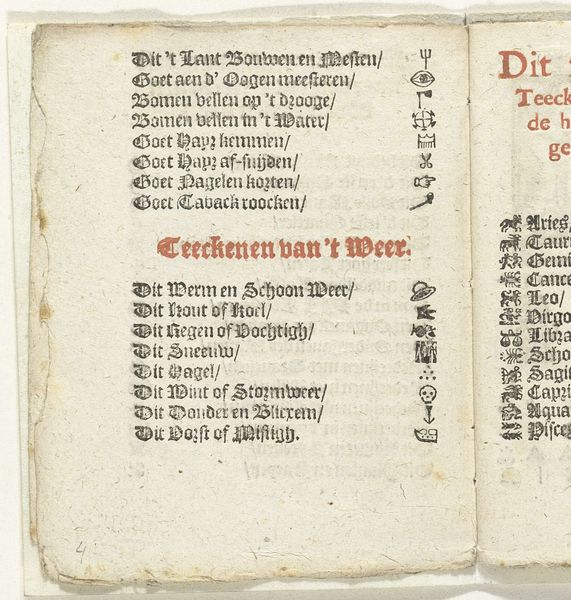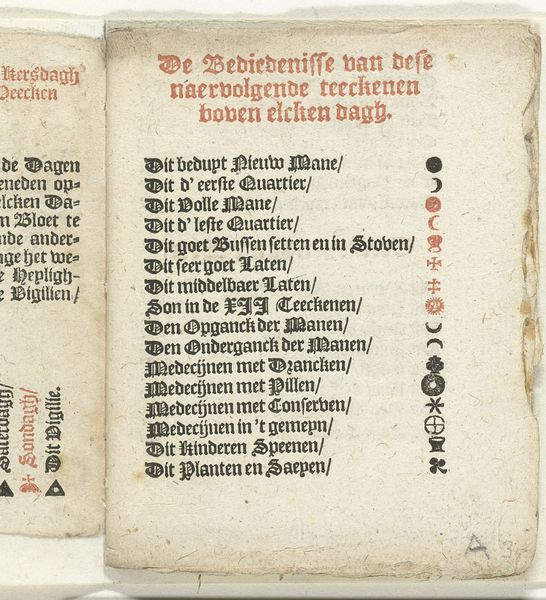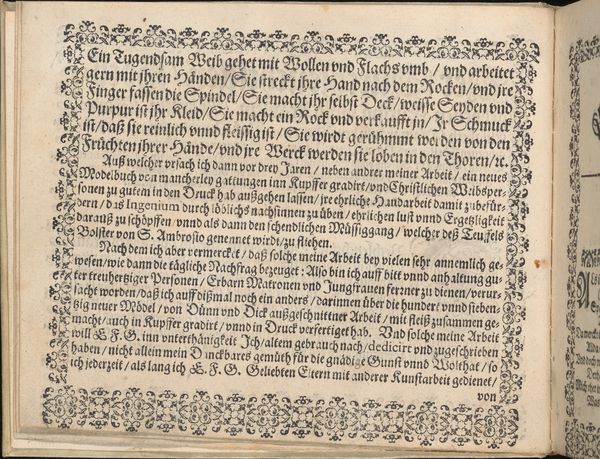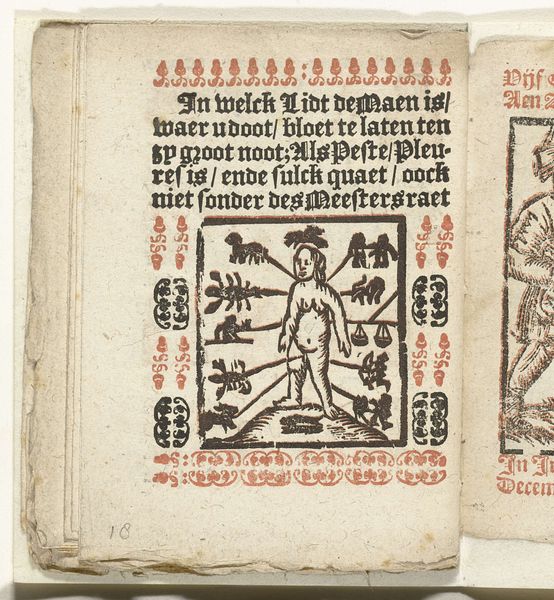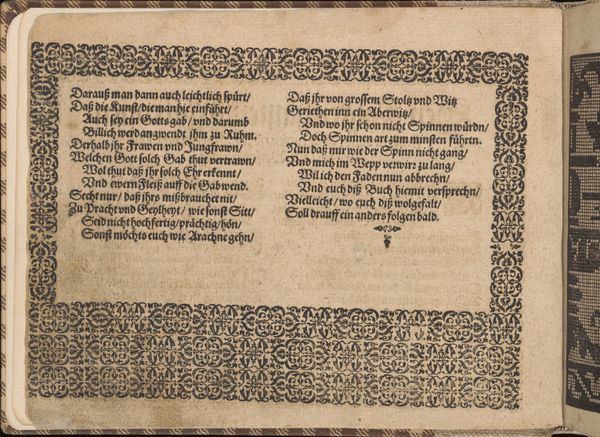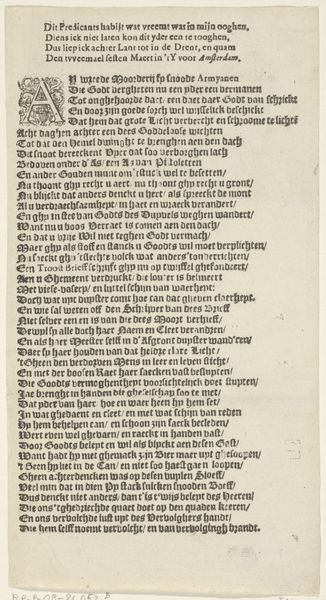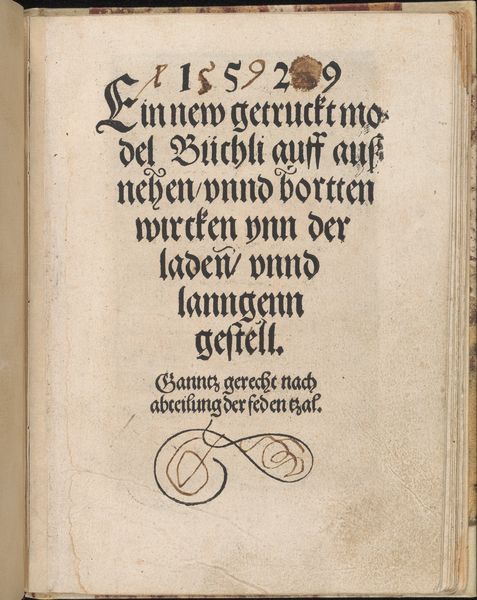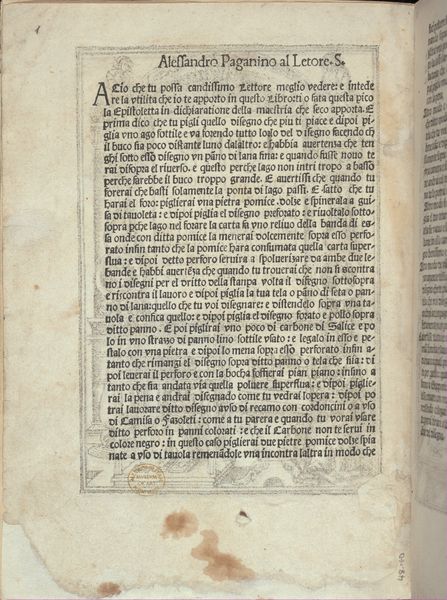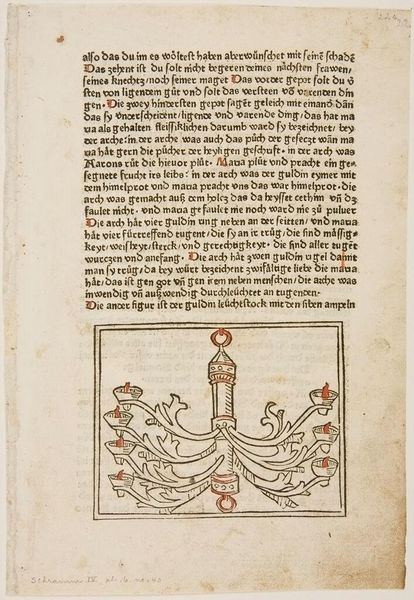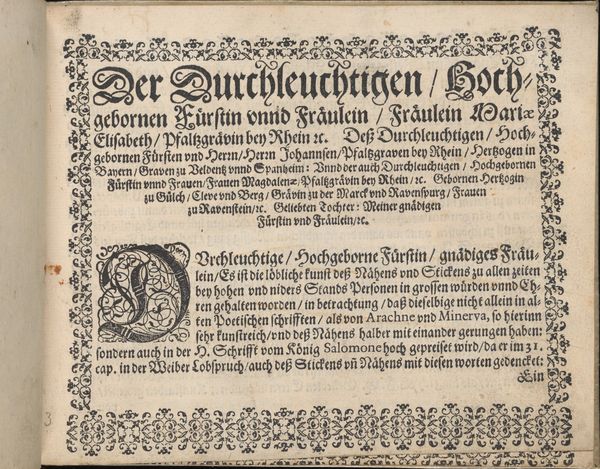
print, paper, typography
#
medieval
# print
#
paper
#
typography
#
miniature
#
calligraphy
Dimensions: height 95 mm, width 83 mm
Copyright: Rijks Museum: Open Domain
Curator: Looking at this image, the stark contrast between the black ink and the rough texture of the paper evokes a real sense of antiquity. It feels almost like peering into a lost world, doesn't it? Editor: Indeed. This is "Bladzijde met de symbolen voor de dagen van de week, 1712" or "Page with the Symbols for the Days of the Week, 1712," dating back to the early 18th century. It’s an early printed page by the widow Slegers. We’re looking at an intriguing example of early typography. Curator: The typography gives it an undeniably medieval aesthetic, despite its 1712 creation date, which already marks it for me as operating within complex webs of production and historical contexts. The combination of text and those minimalist symbols beneath them feels both functional and strangely beautiful. It's reminiscent of astronomical charts, perhaps meant for farmers seeking to plan and maximize growth cycles for a profitable season. Editor: Exactly. These kinds of printed calendars were incredibly important for both the everyday person. Notice how it connects the timing of agricultural tasks – "Sarpen/Planten" or ‘Scraping and Planting’ – with religious observances, or what the print maker here refers to as "Hepligh-Dagen." The positioning speaks volumes. Curator: Right, the alignment of religion, astrology, and early labor management speaks to the social and cultural organization during that time, in which faith played an instrumental role in the agrarian world. The very notion of "holy days," reminds us of how our social and economic lives, now mostly divorced, used to function according to shared beliefs and a sacred timeline. Editor: These symbols below, I imagine, gave even those who couldn’t read a key to the week's significant dates. It's also fascinating how even something seemingly utilitarian becomes a vehicle for cultural memory and visual symbolism, a tool for social structures to take hold. Curator: Thinking about accessibility for a mostly illiterate public provides interesting points of connection to our own age of symbolic social communication in digital platforms: hashtags, emojis. Here, each choice speaks of very old means to produce widely understandable, shared experience of identity, in its connection to work and ritual, both crucial to shaping individual as collective understandings. Editor: Indeed. Looking closely at "Bladzijde met de symbolen voor de dagen van de week" allows us to examine the history of knowledge dissemination, and understand that people from that period are both quite like us, and incredibly foreign.
Comments
No comments
Be the first to comment and join the conversation on the ultimate creative platform.
